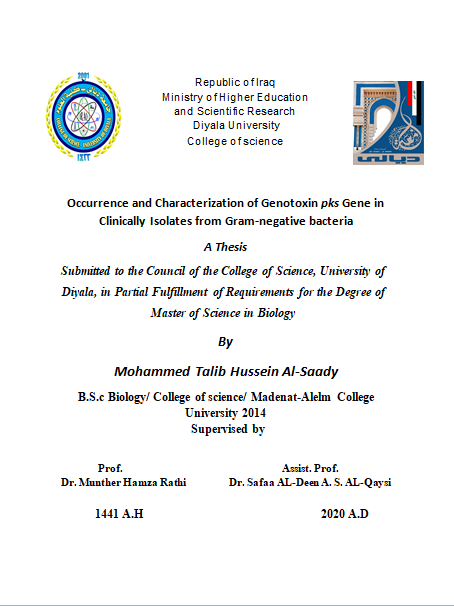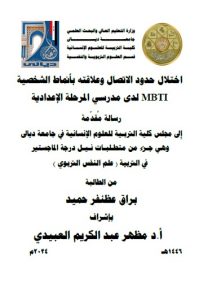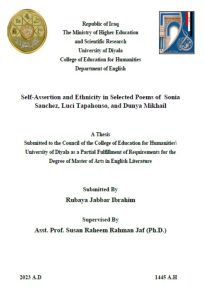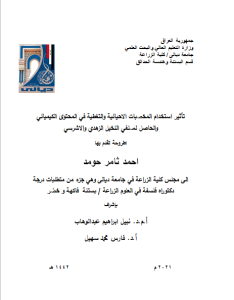Abstract
The genotoxin colibactin is a natural small molecules produced by several members of Gram negative bacteria such as Escherichia coli, Klebsiella Pneumoniae, Enterobacter spp., Ciratobacter spp and Acintobacter spp., that inhabits the gastrointestinal tract of human and animals. This toxin induces the breakdown of double-stranded DNA, chromosome aberrations and cell arrest in the G2/M phase in the eukaryotic host cells.
In this study, 100 clinical isolates of Gram negative bacteria were obtained from different clinical samples, All of these isolates were obtained from patients check out to some hospitals and clinical center in Baghdad/Iraq. The isolates were identified according to morphological, biochemical, physiological, API 20E and VITEK tests. The results showed that the prevalence of E. coli was 51% among the total Gram negative bacterial isolates, K. pneumoniae 28%, P. aeruginosa 12% and E. aurogenes 9%, the highest percentage of bacterial isolates were obtained from stool and urine samples 49 and 34% respectively, while 10% from wound swab and 7% from blood. The DNA of all isolates was amplified by PCR to study the occurrence of several colibactin genes (clbA, clbB, clbN and clbQ). The results of gel electrophoresis revealed that clbA was around 1002bp, clbB 550bp, clbN 700bp and clbQ 821bp in length. Based on PCR analysis results, it was noted that a total of 11% out of 100 tested isolates carried all the screened genes for pks+ (colibactin-positive). The distribution of pks+ among the isolates showed that 7 isolates belonged to E. coli, 2 isolates to K. pneumoniae and 2 to E. aerogenes, while we did not recorded the presence of tested clb genes between the isolates of P. aeruginosa. The highest sensitive level of antibiotics between the pks positive was recorded for Imipenem (100%) in all these isolates. There was also a remarkable level of resistance to Ceftriaxone, Cefotaxime, Piperacilline and Tobramycin. The low level of resistance was observed against Norfloxacin, Ceftaxidime and Nitrofurantion. In order to determine the functionality of pks genes in E. coli and E. aerogenes in killing HeLa cells, these cells were either exposed to pks+ and pks– isolates for two time intervals (6 and 24hours ) under optimal conditions at Multiplicity of infection (MOI 50), only 10-15 % of normal cells were killed after incubation with pks– E.coli isolate under different times intervals, whereas the percentage of the same cells was increased remarkably 50% when they were exposed to pks+ E. coli isolate, and raised up to 80% after 24 hours exposure time. Similarly, E. aerogenes exhibited the same killing pattern towards HeLa cells. When normal cells treated with pks– Enterobacter for 6 hours, they conferred viability of around 90 %, however, they cannot getting longer when they were exposed for 24 hours with pks+ E. aerogenes isolates (killing activity around 75 %).The microscopic observation of the cellular morphological phenotypes, we assume that the treated HeLa cells revealed some responses to the colibactin; the cytopathic phenotype of this genotoxin was represented by decreased cell numbers and enlargement of cell nucleus, which could be due to DNA fragments. The results of fluorescence microscopy of HeLa cells treated with bacterial isolates (pks+ and pks–) with AO/EB staining showed different staining patterns of the nuclei. After treatment of HeLa cells with pks– bacterial isolate E. coli and E. aerogenes (living cells), the nuclear chromatin appeared in different forms of condensation and degradation; the nuclei were green-yellow, yellow-orange to yellow in color. While, in the dead HeLa cells treated with pks+ E. coli and E. aerogenes, the nuclei appeared orange, dark and bright red in color. Following the treatment of control (living cells), the nuclei appeared in green color and without any condensation, degradation or fragmentation.





